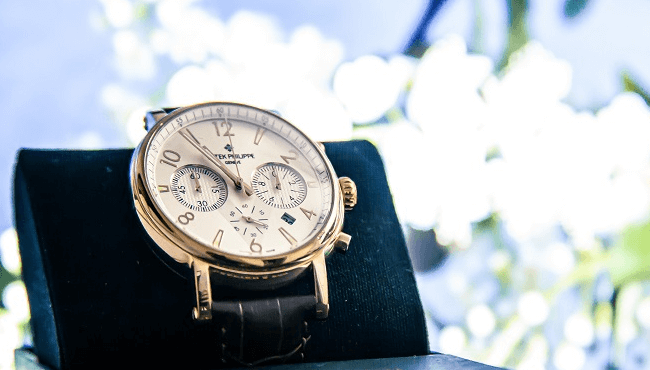Top Watch Maintenance Tips for Longevity

Introduction
Watches are more than just tools for telling time; they are personal statements, investments, and often, cherished heirlooms. Whether you own a luxury timepiece, a classic vintage watch, or a reliable everyday wristwatch, proper maintenance is crucial to ensure its longevity and performance. Understanding how to care for your watch not only preserves its appearance but also enhances its functionality and value over time. In this comprehensive guide, we’ll explore the top watch maintenance tips that every watch owner should know to keep their timepiece ticking beautifully for years to come.
Understanding the Importance of Watch Maintenance
Watches are intricate devices made up of numerous tiny components working in harmony. Over time, these components can wear out, become dirty, or lose their lubrication, leading to a decrease in accuracy and performance. Regular maintenance is essential to prevent these issues, ensuring that your watch continues to function correctly and looks as good as new. Proper care can also prevent costly repairs down the line, preserving both the monetary and sentimental value of your timepiece.
The Basics of Watch Cleaning
Cleaning your watch regularly is one of the simplest yet most effective maintenance practices. Dust, sweat, and environmental pollutants can accumulate on your watch, leading to corrosion, scratches, and other forms of damage. Here’s how you can clean your watch safely:
- Use a soft cloth: Gently wipe the watch case and strap with a microfiber cloth to remove dust and smudges. For metal bracelets, you can use a slightly damp cloth, but avoid soaking the watch.
- Brush away dirt: Use a soft-bristled toothbrush to clean around the case and between the links of a metal bracelet. Be gentle to avoid scratching the surface.
- Avoid harsh chemicals: Never use household cleaners, soaps, or alcohol on your watch, as these can damage the material. Stick to water and mild, watch-specific cleaning solutions.
- Dry properly: After cleaning, ensure your watch is completely dry before wearing it again. Moisture can lead to corrosion and damage the internal components.
How to Safely Store Your Watch
Proper storage is vital to maintaining the condition of your watch when it’s not being worn. Here are some tips to keep in mind:
- Use a watch box: Store your watch in a dedicated watch box with a soft interior to protect it from dust and scratches. If you have multiple watches, consider a watch roll or case with individual compartments.
- Avoid magnets: Keep your watch away from electronic devices and magnetic fields, as these can interfere with the movement and accuracy of your watch.
- Control humidity: High humidity can cause moisture to seep into your watch, leading to rust and other damage. Store your watch in a cool, dry place, and consider using a silica gel packet to absorb excess moisture.
- Keep it wound: If you have an automatic watch, consider using a watch winder to keep it running when not in use. This helps maintain the movement’s lubrication and accuracy.
Regular Servicing: A Must for Watch Longevity
Even with meticulous care, every watch needs regular servicing to keep it in top condition. Watch movements are complex, with many parts that require periodic cleaning, lubrication, and adjustment. Here’s what you need to know about servicing your watch:
- Service frequency: Most manufacturers recommend servicing your watch every 3 to 5 years, depending on the type of movement and usage. However, if you notice any issues such as losing time, difficulty setting the time, or unusual noises, it’s best to take it in for a check-up sooner.
- Choose a professional: Always take your watch to an authorized service center or a reputable watchmaker. They have the expertise and tools needed to disassemble, clean, lubricate, and reassemble your watch correctly.
- Battery replacement: For quartz watches, replacing the battery is essential to prevent leakage and damage to the movement. It’s recommended to replace the battery every 1 to 2 years, even if the watch is still running.
- Pressure testing: If your watch is water-resistant, it’s crucial to have it pressure tested during servicing to ensure the seals are intact and the watch is safe to wear in water.
Protecting Your Watch from Water Damage
Water damage is one of the most common causes of watch failure, especially for non-water-resistant models. Here’s how to protect your watch from moisture:
- Know your watch’s water resistance: Always check the water resistance rating of your watch. If it’s not water-resistant, avoid any contact with water, including washing hands or exposure to rain.
- Check the crown: Ensure the crown is fully pushed in or screwed down before exposing your watch to water. An open crown is a direct path for water to enter the case.
- Avoid hot water: Even if your watch is water-resistant, avoid wearing it in hot showers, saunas, or hot tubs. The heat can cause the gaskets to expand, allowing water to seep in.
- Rinse after exposure: If your watch has been exposed to saltwater or chlorinated water, rinse it with fresh water immediately and dry it thoroughly to prevent corrosion.
Handling and Wearing Your Watch with Care
How you wear and handle your watch daily plays a significant role in its longevity. Here are some tips to ensure you treat your watch with the care it deserves:
- Avoid impacts: Watches are durable, but they can still be damaged by hard impacts. Be mindful of your wrist’s surroundings, especially when wearing a mechanical watch with delicate internal components.
- Take off during sports: Unless it’s a sports watch specifically designed for high-impact activities, it’s best to remove your watch during exercise or sports to avoid accidental damage.
- Use the clasp correctly: For watches with metal bracelets, make sure to use the clasp properly. Forcing it open or closed can lead to wear and tear on the links and pins.
- Avoid prolonged exposure to sunlight: Prolonged exposure to direct sunlight can cause the color of your watch’s dial or strap to fade. It can also increase the temperature of the watch, affecting the internal lubricants.
Dealing with Scratches and Dings
Scratches and dings are almost inevitable, especially if you wear your watch regularly. However, there are ways to minimize and address these issues:
- Polishing the case: Light scratches on metal cases can often be polished out using a microfiber cloth and a watch-specific polishing paste. Be cautious, though, as over-polishing can reduce the sharpness of the case’s edges and details.
- Crystal replacement: If the watch crystal (glass) becomes scratched or cracked, it’s best to have it replaced by a professional. Sapphire crystals are more scratch-resistant but still susceptible to chips from hard impacts.
- Bracelet care: Metal bracelets can be brushed or polished to remove minor scratches. Leather straps can be conditioned with leather care products to keep them supple and prevent cracking.
The Role of Watch Winders in Maintenance
For owners of automatic watches, watch winders can be a helpful tool to keep your timepiece in optimal condition when not in use. Here’s why they matter:
- Keeps the movement running: A watch winder keeps your automatic watch wound, ensuring that the lubricants inside the movement remain evenly distributed. This helps maintain the accuracy and longevity of the movement.
- Convenience: If you own multiple watches, a watch winder can save you the hassle of resetting the time and date every time you want to wear a different watch.
- Choosing the right winder: Not all watch winders are created equal. Look for a winder with adjustable settings that match the winding requirements of your specific watch.
FAQs
What is the best way to clean my watch?
The best way to clean your watch is to use a soft microfiber cloth to wipe down the case and strap. For metal bracelets, a soft-bristled toothbrush can help remove dirt between the links. Avoid using harsh chemicals, and ensure the watch is dry before wearing it again.
How often should I service my watch?
It’s generally recommended to service your watch every 3 to 5 years, depending on the type of movement and usage. However, if you notice any issues, such as losing time or unusual noises, it’s best to have it checked by a professional sooner.
Can I wear my watch in the shower?
Unless your watch is specifically designed to withstand hot water and steam, it’s best to avoid wearing it in the shower. Hot water can cause the gaskets to expand, allowing water to enter the watch.
What should I do if my watch gets scratched?
Light scratches on the case can often be polished out with a microfiber cloth and watch-specific polishing paste. For deeper scratches or damaged crystals, it’s best to have the watch serviced by a professional.
How do I store my watch when not wearing it?
Store your watch in a dedicated watch box with a soft interior to protect it from dust and scratches. Keep it away from magnets and in a cool, dry place. Consider using a watch winder for automatic watches to keep them wound.
Why is my automatic watch losing time?
If your automatic watch is losing time, it may need servicing. The movement might require cleaning and lubrication, or there could be an issue with the mainspring or other components. Take it to a professional watchmaker for diagnosis and repair.
Conclusion
Proper watch maintenance is essential for preserving the longevity, functionality, and aesthetic appeal of your timepiece. By following these expert tips on cleaning, storage, servicing, and daily care, you can ensure that your watch remains in top condition for years to come. Whether it’s a cherished heirloom, a luxury investment, or a daily companion, your watch deserves the best care to keep it ticking reliably and looking its best.





